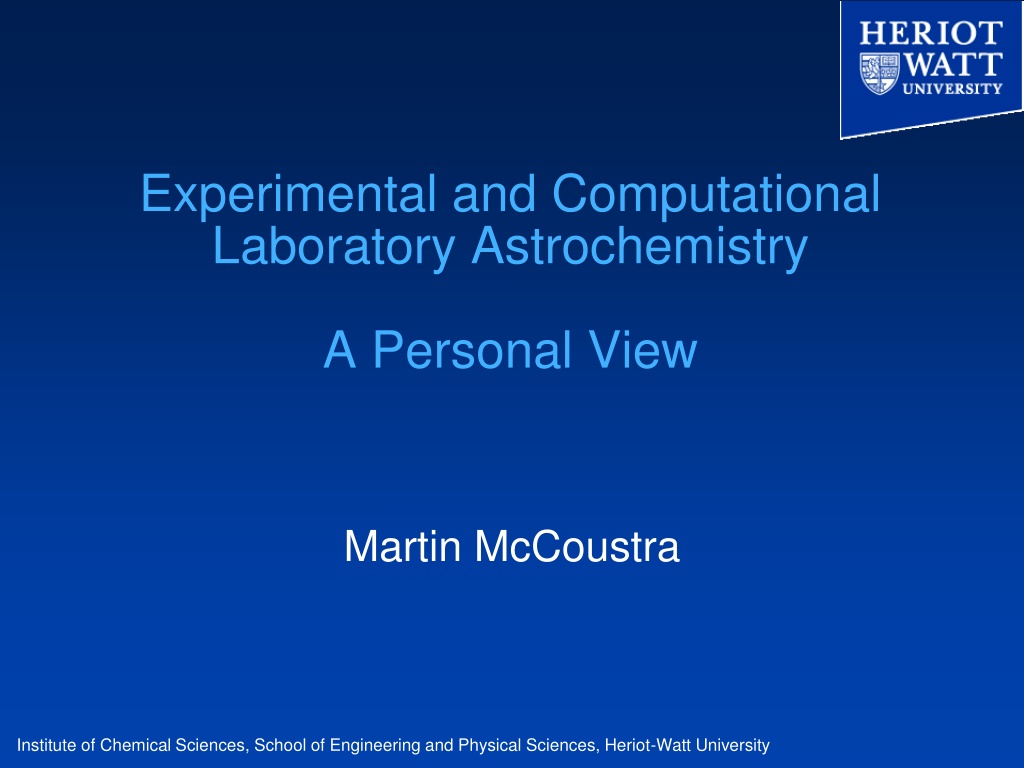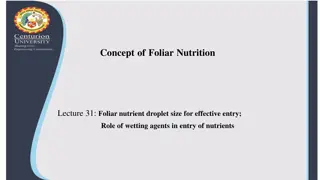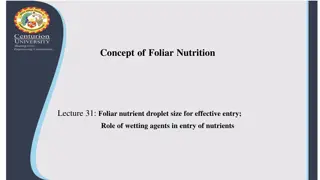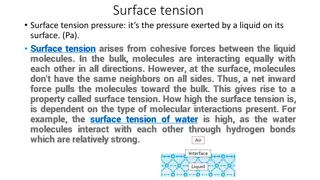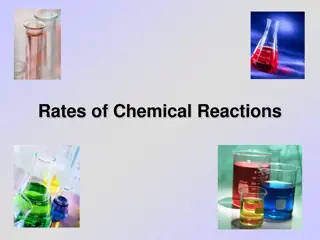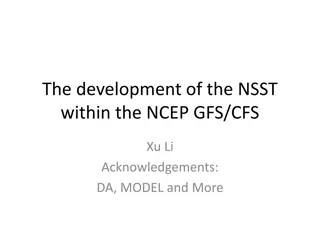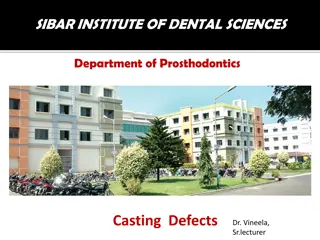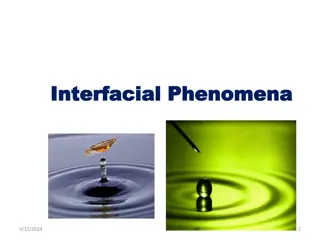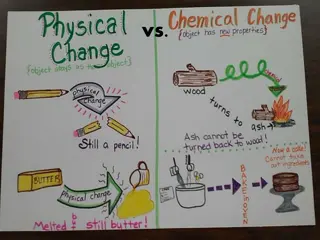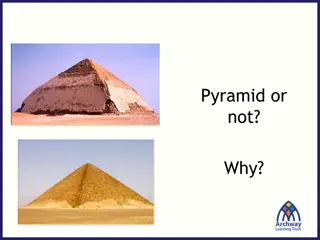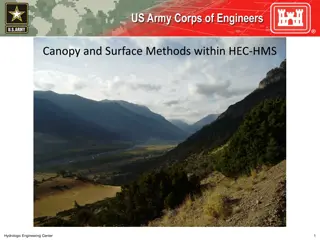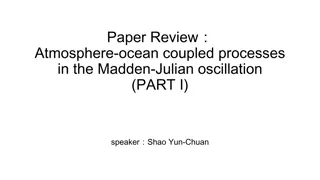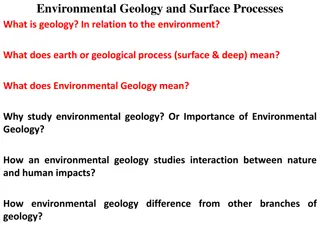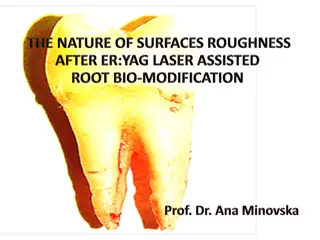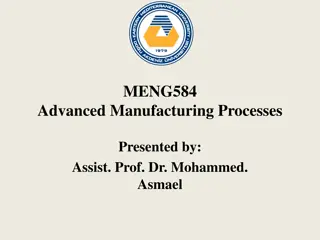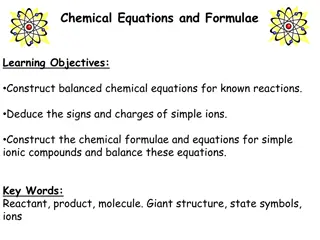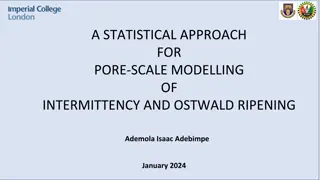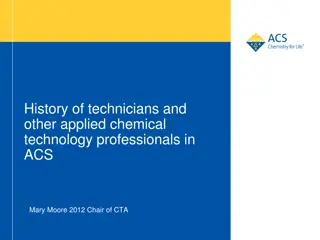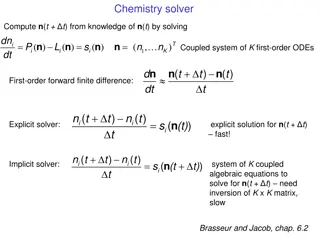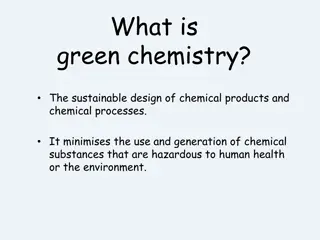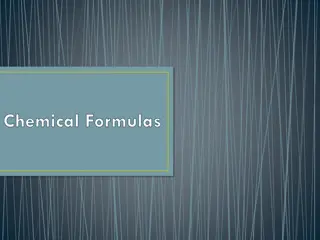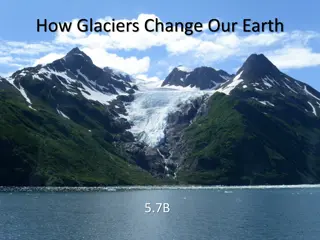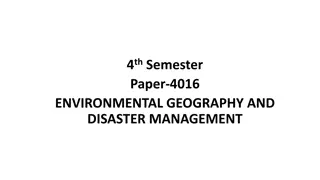Insights into Astrochemistry: Chemical Intuition and Surface Wetting
Discover the intriguing world of astrochemistry through the lens of Chemical Intuition and surface wetting phenomena. Dive into the experimental and computational laboratory perspectives, exploring the complexities of molecular interactions on polar surfaces like silica. Unravel the surprising behavior of water molecules on such surfaces, challenging conventional expectations and opening new avenues for research in this captivating field.
Download Presentation

Please find below an Image/Link to download the presentation.
The content on the website is provided AS IS for your information and personal use only. It may not be sold, licensed, or shared on other websites without obtaining consent from the author. Download presentation by click this link. If you encounter any issues during the download, it is possible that the publisher has removed the file from their server.
E N D
Presentation Transcript
Experimental and Computational Laboratory Astrochemistry A Personal View Martin McCoustra Institute of Chemical Sciences, School of Engineering and Physical Sciences, Heriot-Watt University
Chemical Intuition Chemists acquire through their training what is sometimes referred to as Chemical Intuition A set of simple rules based on observational and theoretical evidence and experience that we apply to complex problems Institute of Chemical Sciences, School of Engineering and Physical Sciences, Heriot-Watt University
Chemical Intuition Intuition Can be Wrong! Two examples Like-dissolves-Like as applied to Wetting/De-wetting processes at surfaces Dipoles counter-align as applied to thin films of dipolar molecules The Examples are Astrophysically Significant! Institute of Chemical Sciences, School of Engineering and Physical Sciences, Heriot-Watt University
Our Substrate Amorphous silica (aSiO2) Produced by electron beam evaporation from solid silica on to a room temperature optically polished substrate Ideal for buried interface RAIRS Surface is polar! metal Laboratory Investigations of the Interaction between Benzene and Bare Silicate Grain Surfaces J. D. Thrower, M. P. Collings, F. J. M. Rutten and M. R. S. McCoustra, Mon. Not. R. Astron. Soc., 2009, 394, 1510 1518 Institute of Chemical Sciences, School of Engineering and Physical Sciences, Heriot-Watt University
Wetting and De-wetting Let s apply chemical intuition Silica is a polar solid and Institute of Chemical Sciences, School of Engineering and Physical Sciences, Heriot-Watt University
Wetting and De-wetting Water is a polar molecule it should wet the silica surface! But TPD shows zero order behaviour at all exposures consistent with de-wetting! Water does not wet the Silica Surface! Peeling the Astronomical Onion A. Rosu-Finsen, D. Marchione, T. L. Salter, J. W. Stubbing, W. A. Brown, and M. R. S. McCoustra, Phys. Chem. Chem. Phys., 2016, 18, 31930-31935 Institute of Chemical Sciences, School of Engineering and Physical Sciences, Heriot-Watt University
When does Water De-wet? A simple RAIRS experiment Fix temperature at 15 K Deposit quantity of H2O Anneal to 18 K and wait for an hour and cool to 15 K, record spectrum and repeat Intensity of O-H stretching band increases with time in a regime where there is no increase in the number of H2O on the surface! Agglomeration H2O and small clusters of H2O into bulk islands on the silica! sub-monolayer 0.007 0 ML H2O 0.5 ML H2O 1 hour 2 hours 3 hours 4 hours 5 hours A infinity 18 K 0.006 0.005 0.004 log( R0/R) 0.003 0.002 0.001 0.000 3600 3500 3400 3300 3200 3100 -1) Wavenumber (cm of isolated Institute of Chemical Sciences, School of Engineering and Physical Sciences, Heriot-Watt University
When does Water De-wet? First order kinetics analysis straight undergraduate laboratory Repeat at new temperature! Arrhenius analysis function of temperature T 25 K Ea 0 kJ mol-1 from the -6 -7 Ea 2 kJ mol-1 Avg of ln(k) -8 as a -9 annealing -10 -11 0.01 0.02 0.03 0.04 0.05 0.06 -1) 1/Temp (K Barrier to Agglomeration of 2 kJ/mol Below 25 K Institute of Chemical Sciences, School of Engineering and Physical Sciences, Heriot-Watt University
Wetting and De-wetting Benzene molecule it should not wet the silica surface! But TPD shows a clear monolayer growing before the multilayer. is a non-polar Benzene Wets Silica Surface! Laboratory Investigations of the Interaction between Benzene and Bare Silicate Grain Surfaces J. D. Thrower, M. P. Collings, F. J. M. Rutten and M. R. S. McCoustra, Mon. Not. R. Astron. Soc., 2009, 394, 1510 1518 Institute of Chemical Sciences, School of Engineering and Physical Sciences, Heriot-Watt University
Wetting and De-wetting Cyclohexane is a non-polar molecule it should not wet the silica surface! TPD is consistent with de- wetting in showing zero order kinetics at all exposures. Chemical Intuition Works! R. Senevirathne, PhD Thesis (Heriot-Watt University, Edinburgh, in preparation) Institute of Chemical Sciences, School of Engineering and Physical Sciences, Heriot-Watt University
Wetting and De-wetting A deeper perspective comes from modest ab initio calculations Silica clusters from work of Bromley and co-workers (Comp. Theo. Chem., 2017, 1102, 38-43) Simple HF calculations with 6.311G** basis using GAMESS-US EBSSE = -11.31 kJ/mol EBSSE = -75.77 kJ/mol Balance of Binding Energy to Surface and to Molecular Solid R. Senevirathne, PhD Thesis (Heriot-Watt University, Edinburgh, in preparation) Institute of Chemical Sciences, School of Engineering and Physical Sciences, Heriot-Watt University
Depositing Dipolar Molecular Thin Films Chemical intuition would tell us (a) Experimental measurement shows us (b) Institute of Chemical Sciences, School of Engineering and Physical Sciences, Heriot-Watt University
Depositing Dipolar Molecular Thin Films Carbon monoxide, amorphous solid water, ammonia, methanol all show this behaviour at cryogenic temperatures and express a bulk electric fields up to 108 V/m Vibrational Stark Effect Surface Potentials We can express this in terms of z/ , the average dipole orientation perpendicular to the thin solid film Potentials increase with increasing film thickness Decrease with increasing deposition temperature Spontaneous Electric Fields in Solid Films: Spontelectrics D. Field, O. Plekan, A. Cassidy, R. Balog, N.C. Jones and J. Dunger, Int. Rev. Phys. Chem., 2013, 32, 345-392 A Review of Recent Progress in Understanding the Spontelectric State of Matter O. Plekan, A. Rosu-Finsen, A. M. Cassidy, J. Lasne, M. R. S. McCoustra and D. Field, Eur. Phys. J. D, 2017, 71, 162 Institute of Chemical Sciences, School of Engineering and Physical Sciences, Heriot-Watt University
Depositing Dipolar Molecular Thin Films Still Don t Understand Why This Happens? Spontaneous Electric Fields in Solid Carbon Monoxide J. Lasne, A. Rosu-Finsen, A. Cassidy, M. R. S. McCoustra, and D. Field, Phys. Chem. Chem. Phys., 2015, 17, 30177-30187 Institute of Chemical Sciences, School of Engineering and Physical Sciences, Heriot-Watt University
So What with Spontelectric Ices? We have demonstrated that spontelectric behaviour in solid CO can be used to fill important gaps in our understanding of the evolution of pre-stellar cores Dust grains with a CO ice mantle reduce the degree of ionization of pre-stellar cores by a factor of between 5 and 6 This reduces the timescale for expulsion of magnetic fields from cores, a key step in promoting gravitational collapse, by a similar factor suggesting an explanation for the discrepancy between observed and calculated timescales for star formation Enabling Star Formation Via Spontaneous Molecular Dipole Orientation In Icy Solids A. Rosu-Finsen, J. Lasne, A. Cassidy, M. McCoustra and D. Field, Astrophys. J., 2016, 832, 1 Institute of Chemical Sciences, School of Engineering and Physical Sciences, Heriot-Watt University
Conclusions Intuition can be helpful But it can be wrong! Experimental and computational studies can help reconcile the issues and give more realistic explanations and reveal interesting new physics and chemistry Institute of Chemical Sciences, School of Engineering and Physical Sciences, Heriot-Watt University
Acknowledgements Dr. s Mark Collings and Jerome Lasne John Dever, Simon Green, Rui Chen, John Thrower, Vicky Frankland, Ali Abdulgalil, Demian Marchione, Alex Rosu-Finsen, Skandar Taj and Rushdi Senevirathne Framework 7 and H2020 EPSRC and STFC Leverhulme Trust University of Nottingham Heriot-Watt University This research was (in part) funded by the LASSIE Initial Training Network, which was supported by the European Commission's 7th Framework Programme under Grant Agreement No. 238258, and the EuroPAH European Training Network, which was supported by the European Commission s Horizon 2020 Programme under Grant Agreement No. 722346. Institute of Chemical Sciences, School of Engineering and Physical Sciences, Heriot-Watt University
